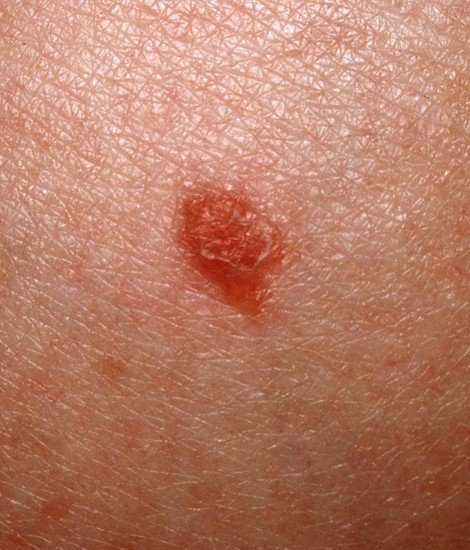Lichenoid Keratosis
Last reviewed by Dr. Raj MD on January 12th, 2022.
What is Lichenoid Keratosis?
This is a small non-cancerous skin lesion with is any abnormal or damaged area of tissue. It is not a common benign skin condition. It is sometimes referred to as a papule. A lichenoid keratosis can range in color from red to gray. It appears that the elderly and females and people who are light-skinned are more at risk for developing lichenoid keratosis.
Symptoms of Lichenoid Keratosis
People who have lichenoid keratosis report very few symptoms but some have reported that they feel a slight stinging sensation and an itchy feeling. The most commonly reported symptom is the lesion itself which is usually surrounded by an inflamed area. Lichenoid keratosis:
- Are very small and will grow to be no larger than point five inches to one inch
- Will generally grow on area that is exposed to the sunlight frequently such as the arms or torso. There are some that will be found on your neck, head, or face.
- When found on a person’s body there is usually just one lesion but some may have a few more.
- Will usually start out as pink or red but could be gray, violet, or brown.
- Vary in texture being either relatively smooth or scaly
What Causes Lichenoid Keratosis?
Lichenoid keratosis forms because of a buildup of excess dead keratin cells. Keratin is a protein that is found in your body that makes up most of your nails, hair, and skin. It can also be found in tooth enamel. As our body pushes this protein to the surface of your skin it dies. When the dead keratin cells build up it can lead to a scaly or hard lesion and resembles lichen. This is a type of crusty fungus that is often found growing on trees and rocks. Lichenoid keratosis does sometimes have that scaly texture and appearance. Normally these dead keratin cells do perform a useful function in protecting the live cells that are just beneath the dead keratin cells but when these dead cells start to accumulate that is when they become a problem. Sometimes they will be producing at too fast of a rate causing the buildup that leads to lichenoid keratosis.
It is also thought that a person can develop lichenoid keratosis because of unprotected exposure or overexposure to the sun. Typically a person will develop a lichenoid keratosis within three months. It is also thought to be caused by certain existing skin condition that cause lesions like seborrheic keratosis regress or lentigos.
Diagnosis
When a person has a lichenoid keratosis surgically removed it will usually be sent in for a biopsy not only to make sure that it is lichenoid keratosis but also to make sure that the cells that have been surgically removed are not malignant. The method used to diagnosis lichenoid keratosis and to check to see if it is benign or malignant is called dermoscopy. Many times lichenoid keratosis is diagnosed based on the appearance of the area of the skin that is affected.
Lichenoid Keratosis Treatment
Treating lichenoid keratosis will usually begin with using a prescription medicated topical cream that contains corticosteroids as the main ingredient or covered with liquid nitrogen. When a person opts to use liquid nitrogen to remove the lichenoid keratosis it is called liquid nitrogen and curettage. During this procedure the physician will use liquid nitrogen to free the lesion and then will use a surgical instrument called a curette to detach the lichenoid keratosis by scraping it with this surgical instrument. There are also some cases where the lichenoid keratosis may need to be removed surgically using laser or electrosurgery.
Lichenoid Keratosis Pictures
Pictures collection of Lichenoid Keratosis…




